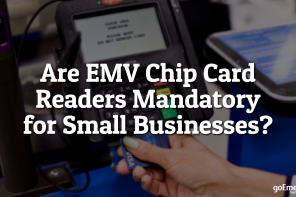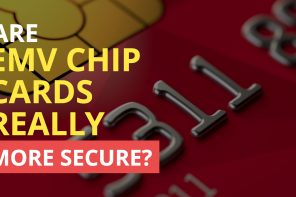Outside of the obvious security benefits, merchants are quickly realizing why it’s important to become EMV certified. Increasingly, payment processing solutions have paved the way for faster and easier EMV integration, which has created a ripple effect across the industry.
The latest data from EMVCo, the global technical body for managing EMV specifications, indicates that 58.9% of card-present contact and contactless transactions globally are EMV-enabled. This figure is based on transactions made between July 2016 and June 2017, which means the actual EMV transaction figure heading into 2018 is likely much higher.
The latest data reveals a significant increase from the previous 12-month period, which showed 42.4% of transactions were EMV-enabled. The 16.5% year-over-year jump has occurred as more merchants upgrade their terminals and payment processing technology to be EMV-equipped.
Keeping in mind that the U.S. adopted EMV much later than some regions, here’s how the figures compare.
- Broken down by region, the U.S. saw the highest YOY increase, with 31.4% of transactions being EMV-enabled. (Compared with 7.2% the year prior).
- Across most of Eastern Europe, the EMV transaction rate is 98.2%.
- Across Africa and the Middle East, the rate is 90.2%.
- The rate for Western Europe and Russia is 89.1%,
- For Canada, Latin America and the Caribbean, the rate is 87%.
- In comparison to the U.S., Asia has a similar EMV transaction rate at 56.2%.
“The most recent transaction volume data indicates that we are moving towards EMV chip technology becoming the foundation for contact and contactless card-present payments worldwide,” Jack Pan, EMVCo Executive Committee Chair, in a recent news release.
EMVCo is collectively owned by American Express, Discover, JCB, Mastercard, UnionPay, and Visa, and focuses on the technical advancement of the EMV Specifications. According to Visa, counterfeit fraud volume decreased 66% at chip-enabled merchants in June 2017 from the same month in 2015.
“As EMV chip migration approaches maturity across the globe, EMVCo continues to work with the payments community to evolve the EMV Chip Specifications to promote a secure and interoperable basis for mobile payments and other emerging payment technologies and meet the long-term needs of the payments ecosystem,” Pan wrote.
Why EMV Matters for Merchants of All Sizes
There were more than 1,200 data breaches in 2017 alone, according to data from the ITRC. While not of those involved payment credentials, a significant number of breaches involved the hacking of sensitive personal data.
This increased number of breaches should alert merchants to the reality that more is needed to protect themselves from outside threats. According to a Nilson report, plastic card fraud is expected to grow to $31.67 billion in 2020. These rapid rising fraud rates stress the urgency for merchants who haven’t made the EMV switch.
As fraud rates continue to rise, particularly across the e-commerce ecosystem, merchants who aren’t EMV compliant should act now. As the global standard for credit and debit card payments, EMV creates a one-time use code (tokenization) for each transaction. The added protection comes with the tiny chip embedded in the card, encrypting every transaction.
EMV creates an additional layer of security, giving merchants peace of mind their payment systems are fully compliant. EMV-capable payment devices manage payment transactions instead of the POS device, which alleviates the PCI compliance complexities for merchants for a majority of purchases.
Besides protecting your payment processing terminals, they also reduce counterfeit card fraud and enable your business to accept more diverse forms of payment (chip cards, contactless and mobile). EMV protects cardholder data, allowing you to avoid costly and complicated litigation associated with a potential credit card breach. To help streamline this process, merchants should rely on an integrated payment processing partner can lessen the EMV adoption burden, and eliminate the liability burden on merchants.
—
With goEmerchant, our EMV solutions are also NFC capable which future-proofs your payment systems. By relying on the right payment processing partner, your business can be well equipped for EMV transactions within a matter of days.




